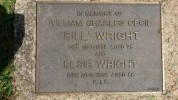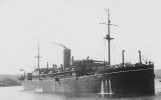WRIGHT William Charles Cecil
-
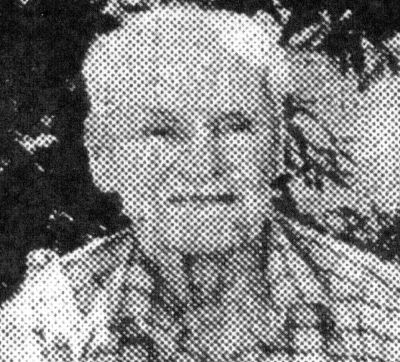
- 7069
- Private
- 15 Battalion
- 23rd Reinforcements, 4th Training Battalion, Codford
- Pomona
- Yes
- 6 February 1891
- Wollongong, New South Wales
- 19 October 1916
- A72 Beltana
- 25 November 1916
- Sydney
-
William Charles Cecil Wright was born on 8 February, 1891 in Wollongong, south of Sydney, New South Wales. He was one of eight children born to Charles Daniel Wright and Leah Robina Rose.
Charles Lesley Ambrose Wright (1886-1966)
Maud Amelia Wright (1893-1960)
Elizabeth CL Wright (1888)
Leah Ethel Wright (1897-1971)
Harold Clarence Wright (1900-1985)
George Allen Wright (1905-1950)
Wesley Gordon Wright (1907-1984)When he was 25 he married Elsie Sallaway, age 18, at Cooroy in Queensland on 17 October, 1916. William had spent a number of years on the Sunshine Coast areas of Queensland. He was a good looking young man with an eye for the ladies and a great sense of humour. Two days after the marriage William enlisted for active service in the Great War and Elsie returned to her parent’s property near Pomona to await the birth of her child as she was six months pregnant. On 11 February, 1917 she gave birth to their first and only child, Edward Charles.
William joined up in Brisbane on 19 October, 1916 in the 23rd reinforcements of the 15th Battalion. He was 5’10” (177cms) tall and weighed 156 pounds (70 kgs) and had blue eyes and fair hair. In 1916 recruits were only given a minimum of training before they were sent to England for more intensive training. He sailed from Sydney on board the troopship A72 “Beltana” on 25 November, 1916. Upon his arrival in England he was sent straight to hospital with mumps. The close confinement of men on troop ships and barracks contributed to infection. Today mumps is considered mainly a childhood disease but it used to be known as a disease afflicting armies and mumps was one of the leading causes of hospitalization during World War 1.
On 7 February, 1917 he proceeded to Codford for training with the 4th Training Battalion. The 4th Training Battalion was operational from August, 1916, until November, 1917. In 1917, soldiers at Codford left an unusual memento that has become a lasting reminder of their presence there. Using the glass bases of beer bottles they sculpted a large (53 x 45 metres) Rising Sun badge on the side of a nearby hill. Polishing the glass, the story goes, became a punishment duty and the slope on which they worked, Lamb Down, became known as 'Misery Hill'. The badge was covered with turf during World War II but its outline has since been restored by scouring it into the chalk of the hillside. Though the military camps have long gone, the villagers of Codford maintain their Australasian connection by holding a memorial service on Anzac Day every year.
On 22 May, 1917 he had completed his training and was sent to France via Southampton. He joined his battalion in the field on 12 June, 1917. On 3 July, 1917 two companies of the battalion were on the front line and two in the support trenches. The enemy shelled the lines continually throughout the day and William was wounded probably from shrapnel.
Later in the month William entered a period of ill health with severe Gastritis and also a sprained ankle. On three occasions he was struck down by trench fever requiring hospitalisation for a total of 66 days. Trench Fever was a moderately serious disease transmitted by body lice. The disease is a five day fever with high fever, severe headaches, pain on moving the eyeballs, soreness of the muscles of the legs and back, sensitivity in the shins. Recovery takes about a month and a fifth of the Australian Army were inflicted. Treatment was experimental at its best without modern antibiotics.
Soldiers who went Absent Without Leave were punished by loss of pay and William was no exception although his absences were relatively minor compared to others but he did lose 9 days pay. It has to be remembered that not only did the soldier suffer the loss of his pay but also his next of kin to whom he had made an allotment to back in Australia. In this case Elsie had been allotted the sum of 3 shillings per day. Unfortunately William also contracted the sexually transmitted disease, gonorrhoea, which was a difficult and painful disease to cure. He was hospitalised for a period of 154 days and quite often the next of kin did not know why their allotment had been stopped.
The army regarded VD as a “military crime” as it took men out of action and punishment was severe and embarrassing for the man who would not want his family to know. A man would not receive any pay until his family allotments had been made up so this sometimes caused great hardship for the soldier concerned. Gonorrhoea was mainly treated by urethral washouts using medicated fluids, a treatment that was much detested and feared by the men.
On 1 September, 1918 William was back with his battalion in France. Seventeen days later he was wounded for the second time. An attack had been planned at Jeancourt and the day before the planned attack the weather turned miserable. Zero hour was on the 18th at 5.20 am. Everything was finally decided and nothing was left unexplained. Rations arrived in good condition and hot on arrival. The battalion was formed up in battle order on the tape line at 4.35 am. The barrage commenced at zero hour and was “splendidly” placed. The whistles blew and the men moved forward into the battle.
The Australians captured Le Verguier. The 1st Division attacked with 2854 infantry and the 4th Division, of which the 15th was a part with, 3048. This represented about one sixth of their original strengths. Both divisions were withdrawn from the line and were not to see action in the war again.
William Wright was standing beside his good mate, Vincent Michael Donnelly, waiting for the order to proceed. Vincent did not survive this battle. He was wounded by a piece of shell entering his neck. A shell landed quite close to them. William stayed with his wounded mate for a while and held him in his arms but soon had to leave him to seek medical attention for himself for a gunshot wound to his ear.. Later William saw some of Vincent’s old mates and they said they had buried him and put a cross on his grave. William wrote to Eliza Donnelly, Vincent’s fiancée in Eumundi, and an extract of his letter was published in the Chronicle and North Coast Advertiser on 10 January, 1919.“He had many mates in the battalion and he was a great favourite. I can assure you all the lads over here grieved over the loss of a true mate but I know that anything we suffered was not to be compared to what the sad news caused at home. I can state without fear of overestimating the dear lad’s golden qualities that he died as he lived, a brave boy and one who never knew fear. Although he has gone to his long rest he will still live in the memory of all who knew him and his name will always be spoken with the greatest of respect. I want to tender my sympathy to you in your sad bereavement.”
In 1919, Bill Wright brought Vincent’s possessions back to Australia to return to his family but withheld a postcard he thought would upset Vincent’s mother. He had kept it because he didn’t know what else to do with it. The memento was returned to relatives by Bill 44 years later. He found the card in the uniform pocket of Vincent Donnelly, the day he was killed in action.
The card is written in French and the lace on the front has deteriorated but the back is still legible, if somewhat hard to read.Translation of the Postcard
“Le Havre le 18 Juin 1918
My Dearest boy
I am very worried not letter from you, since two months.
I am very sorrow. I will know so you are in very good health.
I hope my little dear you send me too saying,
I have send one letter for Jack Kitchen always same address, not find Jack, my letter returned;
Behold why I am very anxious for you also.
Receive my little dearest boy all my kisses and love,
Your little girl Juliennne xxxxxxxx”William was admitted to hospital in France and he would take no further part in the hostilities and returned to his battalion after the Armistice where he was appointed a temporary driver. He left France on 31 March, 1919 and was granted three months leave in England. He returned to Australia on board the “Plassy” and was discharged from the A.I.F on 15 December, 1919.
After William’s return from the war the young family moved to Tweed Heads, Northern New South Wales where they stayed for at least 12 months. They then moved to the hinterland of the Sunshine Coast to their first farm in White’s Road, near Landsborough. As a returned soldier, William received a government subsidised loan to buy the property. Life was not easy. The homestead was little more than a slab hut. Amenities were primitive; lighting was by kerosene lamp and there was neither running water nor a hand pump at the back of the house.
Both William and Elsie worked long and hard. During the day William worked three miles away on another man’s farm at Bald Knob Mountain while Elsie did the housework and her share of the farm work. During the season, William cut bananas in the evening and Elsie packed them. He then took them the 10 or 12 kilometres into Landsborough returning home again at 2.30 am. At 7 o’clock it was time to leave again for his day-time job. Elsie’s experience at making do as a dairy farmer’s daughter stood her in good stead. She coped with the physical labour of the farm, was an excellent cook and a good shot with a rifle.
In the following years, William and Elsie owned several properties in the Landsborough district. After some twelve months of share farming and dairying in Maleny they moved to Caboolture. William found work on a farm at Mt Mellam, a soldier settlement near Landsborough. Elsie looked after her home and family and ran a fruit stall at the Caboolture Railway Station.Elsie Wright found fame as an accomplished needlewoman exhibiting in her home state and interstate where over a forty year period she won some 10,363 prizes and awards. The prizes provided essential cash to boost the family income – no less than 500 pounds in one of the deepest Depression years. In 1980 she donated her collection of 129 pieces of needlework and handcrafts to the Queensland Museum.
Both William and Elsie were cared for in their old age in the same nursing home in Nambour. William died at the age of 95 on 31 January, 1986. Both are buried together in the Nambour Lawn Cemetery. - Western Front
- Jeancourt
-
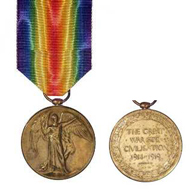
-
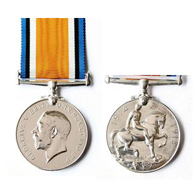
- Returned to Australia
- 30 October 1919, Discharged 15 December, 1919
- 31 January, 1986
- Nambour
- 95
- Nambour Garden Lawn Cemetery
-
Maroochy Shire Honor Roll, Shire Chambers, Bury Street, Nambour
Nambour (Maroochy Shire) Roll of Honor Scroll, Private Collection, Nambour (this scroll was available for sale to the public after the war)
-
Family History – www.ancestry.com.au – Public Trees
Resources for Elsie Wright - http://trove.nla.gov.au/work/21237292?q&versionId=25346608
Service Records – www.naa.gov.au
Embarkation Roll - https://www.awm.gov.au/images/collection/items/ACCNUM_LARGE/RCDIG1067398/RCDIG1067398--474-.JPG - Yvonne Atkinson

